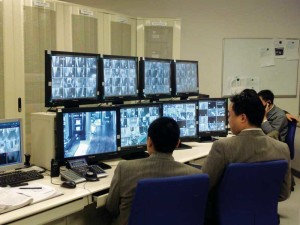Managing physical security information

Inventory of subsystems
A full inventory of existing or planned subsystems that will be connected to the PSIM solution—including manufacturer name, model, series, part, and version information (i.e. access control, video management software, digital video recorders, intrusion alarm panels/systems, intercommunications systems, and radio systems)––must be included. Each subsystem ‘connector’ is a cost item for PSIM solution pricing.
Data types
A definition of the data types expected to be received from each of the installed or planned subsystems for use in the PSIM environment must also be incorporated in the specification. The complexity of each subsystem integration can affect the engineering services that will be required.
Subsystem field components
A full inventory of subsystem field components will be mapped and incorporated into the PSIM software environment (i.e. cameras, card readers, alarm sensors, and call stations). PSIM software pricing and professional services labor costing are directly calculated from this data.
Monitoring locations
The number and location of centralized, regional, or local system monitoring locations, as well as the number of concurrent users of the solution, should be incorporated in the specification. This information is used in defining the number of client workstations, software user licenses, and computing hardware and resources needed.
Compliance matrix
A technical compliance matrix should be provided that details the technical capabilities, features, functions, capacities, and performance requirements of the PSIM solution. Bidders and proposers should be required to respond with the extent of their proposed solution’s compliance to each item.
Security integrator requirements
Minimum security integrator requirements should also be incorporated to ensure qualification for deployment of PSIM solutions. These should include:
- past successful experience deploying PSIM solutions for similar environments and project requirements;
- team member training and certification with the specific PSIM software solution and subsystems being deployed and integrated;
- project team member knowledge, skills, training, experience, and make up to include security subject matter experts, PSIM solution experts, IT/network specialists, software development engineers, and project managers;
- the ability to provide in-house professional services for the design, deployment, and support of the overall PSIM solution; and
- offices and professional service delivery capabilities at all of the owner locations involved in the PSIM deployment, whether local, national, or global geographies are required.
Creating an innovative security solution
With a full PSIM solution, key security solutions—which were formerly difficult, if not impossible to attain with available security technology—can be implemented. The practice of ripping and replacing systems can be substituted with leveraged investments in existing security technology, while updating and modernizing security systems. Separate security systems in an enterprise environment can be integrated into a single, common operating system for enhanced situational awareness. Additionally, ROI can be achieved through the regional or global consolidation of security control and monitoring centers. A successful, full PSIM solution can provide significant benefits and enhancements to an organization’s security and asset protection programs. Key benefits include:
- leveraging and extending physical security investments;
- reducing operational costs;
- improving security response times, effectiveness, and efficiency;
- minimizing risk; and
- impacting the company’s bottom line.
Designers and specifiers must understand PSIM is not an out-of-the-box installation. It combines software and highly technical professional deployment services to deliver an end-to-end, integrated physical security solution. By gaining knowledge and familiarity with the solution, designers and specifiers can effectively specify physical security information management solutions and select qualified integrators to effectively implement them.
Mike Webster, CPP, is the manager of the Global Security Center of Excellence at Johnson Controls. With more than 27 years of progressive government, corporate, and private security management and consulting experience, his career includes U.S. military security and counter-terrorist operations, security director assignments for large public companies, and ownership and management of a security consulting and engineering company. Webster can be reached via e-mail at michael.a.webster@jci.com.








